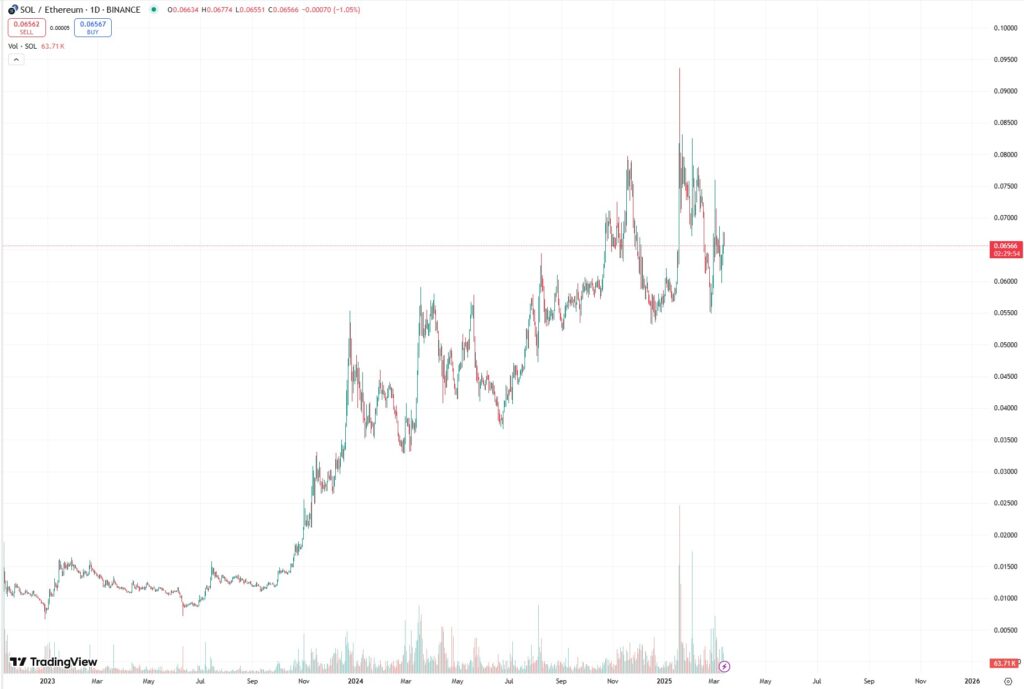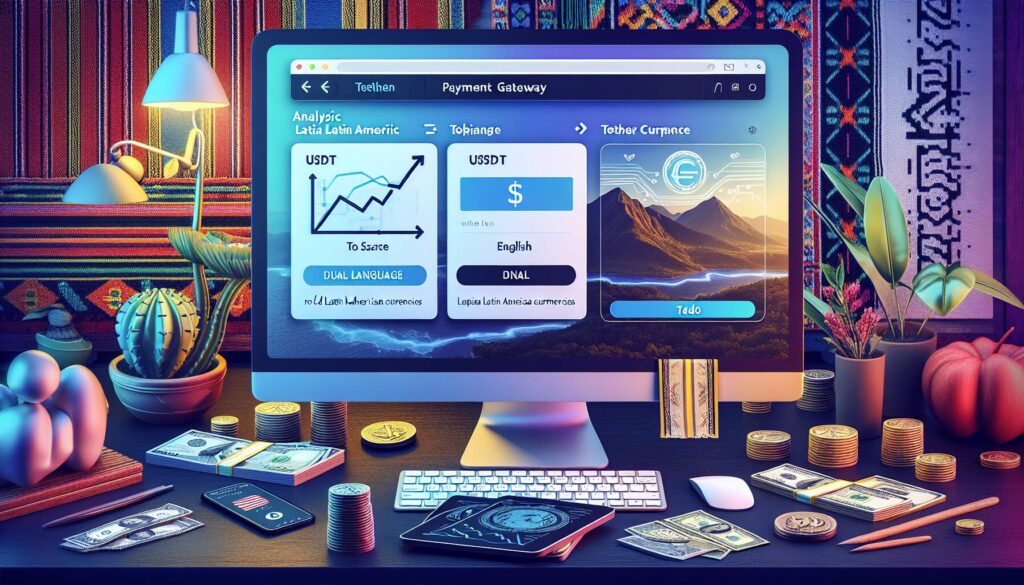The cryptocurrency landscape is about to witness a significant development with the upcoming launch of Solana (SOL) futures on the prestigious Chicago Mercantile Exchange (CME) on March 17. This move is expected to pave the way for the first-ever Solana exchange-traded funds (ETFs) in the United States. According to Chris Chung, the founder of Solana-based platform Titan, the introduction of SOL futures represents a key milestone in the maturation of Solana as an asset class.
“The existence of regulated Solana futures signals to regulators that Solana is maturing as an asset, making it easier for them to greenlight additional financial products of similar risk and type,” Chung remarked.
As the CME prepares to launch these futures contracts, it follows a recent trend where Coinbase already launched SOL futures earlier this year. This regulatory advancement is seen as a crucial step towards the approval of spot Solana ETFs, with Chung anticipating a green light from the US Securities and Exchange Commission (SEC) as soon as May. The positive trend in futures trading could potentially enhance investor confidence, making Solana a more appealing option amidst ongoing turbulence in the broader cryptocurrency market.
Futures contracts serve an essential function by establishing a stable benchmark for a digital asset’s performance, which can prove advantageous for the future approval of Solana ETFs. These developments come at a time when Solana’s growth narrative appears poised to evolve beyond just the realm of memecoins—assets that had largely driven the blockchain’s success in previous years.
“These products will bring more serious, sticky capital and pave the way for the development of other real-world use cases, such as payments and remittances,” said Chung.
While memecoins accounted for a substantial portion of activity on the Solana network, recent scandals have dampened sentiment among retail traders. In fact, asset manager VanEck notes that memecoins make up approximately 80% of the network’s revenues. However, the introduction of futures and potential ETFs could serve to attract more serious investment and stimulate long-term revenue streams.
Despite fluctuations in trading volumes, Solana continues to show resilient performance, rivaling Ethereum’s ecosystem. The SOL token has outperformed Ether considerably since early 2024, as investors seek alternative means of exposure to cryptocurrencies amid Ethereum’s struggles following significant updates aimed at reducing transaction fees.
As excitement builds around Solana’s future, Chung emphasizes that these developments represent a promising opportunity for retail investors looking for a balanced approach to crypto investments, with industry observers like Bloomberg Intelligence estimating a 70% chance for the SEC to grant approval for spot Solana and Litecoin ETFs in the near future.
Upcoming Launch of Solana Futures and ETFs
The launch of Solana (SOL) futures on the Chicago Mercantile Exchange (CME) is a pivotal event that may influence the cryptocurrency landscape:
- Launch Date: Solana futures contracts are set to debut on March 17, marking a significant milestone for regulated Solana products in the US.
- Pathway to ETFs: The introduction of these futures contracts is believed to pave the way for the approval of Solana exchange-traded funds (ETFs), expected as early as May, enhancing investment options.
- Regulatory Implications: The existence of regulated Solana futures signals maturing asset status for Solana, possibly leading regulators to greenlight additional financial products.
- Impact on Asset Growth: Futures and ETFs are anticipated to attract serious capital, steering Solana towards real-world applications like payments, beyond its current focus on memecoins.
- Market Competitiveness: Solana’s performance suggests it is becoming an appealing alternative for retail investors seeking exposure to cryptocurrencies without taking excessive risks, especially in contrast to Ethereum.
- Historical Performance: The native SOL token has outperformed Ether since early 2024, suggesting a shift in market preferences among cryptocurrency investors.
“These products will bring more serious, sticky capital and pave the way for the development of other real-world use cases.” – Chris Chung
These developments could significantly impact readers looking to invest in cryptocurrencies or those interested in understanding market trends. The potential approval of Solana ETFs may provide more secure investment options, while the introduction of futures contracts might stabilize Solana’s market position amidst fluctuating sentiments in the crypto world.
Solana Futures and ETFs: A Strategic Move in the Crypto Landscape
The imminent launch of Solana (SOL) futures on the Chicago Mercantile Exchange (CME) marks a significant development in the cryptocurrency market. This launch, scheduled for March 17, signifies a robust step towards mainstream acceptance of Solana, particularly with the anticipated approval of spot Solana ETFs in the near future. Compared to its main competitor, Ethereum, which is grappling with price volatility and transaction fee reductions post-Dencun upgrade, Solana’s appeal is increasingly pronounced, especially for retail investors seeking less speculative avenues.
One of the primary competitive advantages of SOL futures is the establishment of a regulated market, effectively legitimizing Solana as an asset. This framework not only enhances investor confidence but also lays the groundwork for future financial products. By creating a more stable benchmark through regulated futures contracts, the CME allows investors to engage with Solana without the high-risk profile associated with memecoins that have historically dominated the network’s transactions.
However, there are challenges associated with this advancement. The historical reliance of Solana on memecoins—accounting for roughly 80% of its revenue—raises concerns about sustainable growth. While futures can signal maturity, Solana must evolve beyond these high-risk assets to ensure long-term viability. Recent declines in network activity due to memecoin scandals further complicate this scenario, indicating the fragility of Solana’s current revenue streams.
The impending ETF approvals, particularly those by asset managers like VanEck and Canary Capital, could significantly benefit retail investors looking for a reliable entry point into the crypto market. With the SEC’s approval odds reportedly at 70%, there’s a sense of optimism that Solana can capture the interest of investors wary of Ethereum’s current struggles. Thus, Solana has the opportunity to position itself as an alternative for those seeking exposure to cryptocurrencies beyond the traditional Bitcoin and Ethereum narrative.
On the flip side, success in launching these products could create challenges for Ethereum, especially if Solana begins to siphon off retail investment interest. Ethereum’s struggles with transaction volume and high fees could lead more investors toward Solana, particularly as it provides a compelling case for stable growth characterized by real-world use cases in payments and remittances.
The broader implications of these developments are profound. While Solana is poised to attract more institutional and retail capital, it must ensure that the groundwork laid by futures contracts translates into tangible long-term benefits and not just a momentary spike in interest. Investors and traders alike should keep a close eye on how effectively Solana can maneuver its growth strategy beyond the confines of memecoins, positioning itself as a serious contender in the cryptocurrency ecosystem.
















